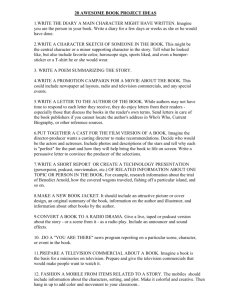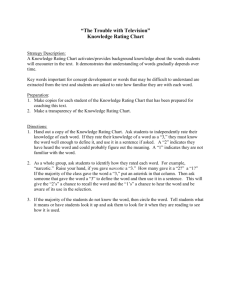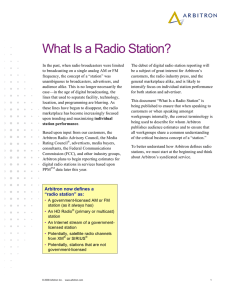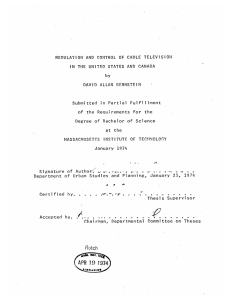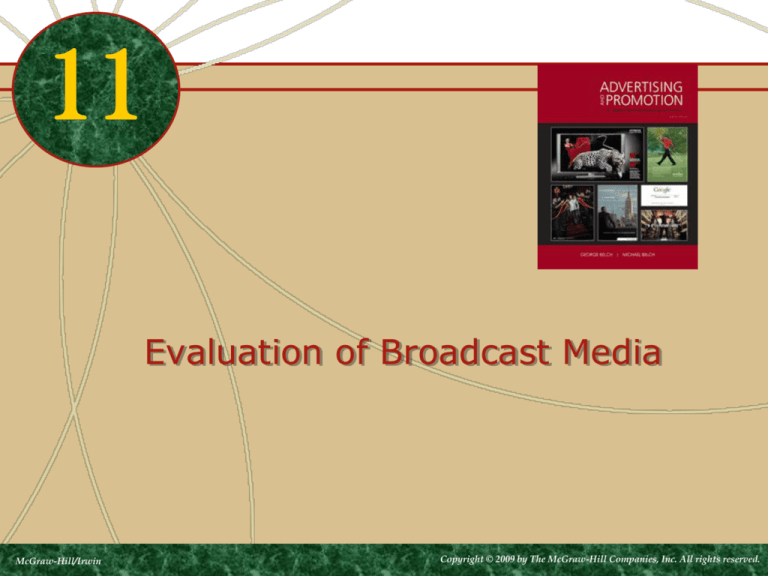
11
Evaluation of Broadcast Media
McGraw-Hill/Irwin
Copyright © 2009 by The McGraw-Hill Companies, Inc. All rights reserved.
Television Advantages
Creativity and Impact
Coverage and Cost Effectiveness
Captivity and Attention
Selectivity and Flexibility
Reaching Large Audiences via Program
*Click outside of the video screen to advance to the next slide
Television Disadvantages
Fleeting
Message
Limited
Attention
Zipping
Cost
Negative
Factors
Low
Selectivity
Clutter
Zapping
Negative
Evaluation
Distrust
Viewer Involvement
DVRs are Impacting Television
Top 10 Network TV Advertisers
Clever TV Ads Entertain, Inform, and Retain
*Click outside of the video screen to advance to the next slide
Network versus Spot
Network
Affiliated stations
that are linked
Purchase transactions
are simplified
Spot &
Local
Commercials shown
on local stations
May be local or “national
spot” commercials
The CW Network
Syndicated Programs
Sold and
distributed
station by
station
Advertisersupported or
bartered
Off-network syndication
are “reruns”
First-run syndications
are also featured
Programs sold to stations in
return for air time
Top 10 Syndicated Programs
Methods of Buying Time
Sponsorship
Participations
1. Advertiser
assumes
responsibility
for the
production
and perhaps
content
1. Participating
sponsors share
the cost
2. Sponsor has
control and
can capitalize
on a show’s
prestige
2. May participate
regularly or
sporadically
3. Advertiser isn’t
responsible for
production
4. Participants
lack control
over content
Spot
Announcements
1. May be
purchased
by daypart
or adjacency
Weekday Television Dayparts
Morning
7:00-9:00 a.m.
Daytime
9:00 a.m.-4:30 p.m.
Early Fringe
4:30 p.m.-7:30 p.m.
Prime-Time Access
7:30 p.m.-8:00 p.m.
Prime Time
8:00 p.m.-11:00 p.m.
Late News
11:00-11:30 p.m.
Late Fringe
11:30-1:00 a.m.
Cable Television (CATV)
Characteristics
Advantages
Limitations
1. National,
regional, and
local available
1. Highly selective
“narrowcasting”
1. Overshadowed
by major
networks
2. Targets specific
geographic
areas
2. Reaches
specialized
markets
3. Low cost and
flexibility
2. Audience is
fragmented
3. Lacks
penetration in
major markets
ESPN is One of the Most Popular Cable Networks
SportsCenter Spots
*Click outside of the video screen to advance to the next slide
The Future of Cable
More
channels
Govt.
regulations
Future
Challenges
DBS
services
Competition
New
technology
Test Your Knowledge
The sole source of network television and local
audience information is:
A) Arbitron Co.
B) Nielsen Media Research.
C) RADAR
D) Smart-TV
E) Burke Research
Measuring the TV Audience
Total Audience
Program
Rating
Share of
Audience
Households
Using TV
TV Audience Measures
Program Rating
Rating =
HH tuned to show
Total U.S. HH
Share of Audience
Share =
HH tuned to show
U.S. HH using TV
National Audience Information
Local Audience Information
Sweeps Periods
Developments in Audience Measurement
Commercial Ratings
data (C3)
Anywhere Media
Measurement (A2/M2)
Engagement metrics
Radio and TV Similarities
Are time oriented media
Are sold in time segments
Have some network affiliates
Have some independents
Both
media…
Use the public airway
Are regulated by the F.C.C.
Are externally paced media
Are passive, low-involvement
Radio Differs From TV
Is more limited
communication
Offers only an
audio message
Has less status
and prestige
Costs much less
to produce
Costs much less
to purchase
Advantages of Radio
Cost and Efficiency
Receptivity
Selectivity
Flexibility
Mental Imagery
Integrated Marketing
Mental Imagery
• Visual elements of television
commercials are transferred into the
consumer’s mind by using a similar
audio track in radio commercials
Burger King Uses Radio Creatively
*Click outside of the video screen to advance to the next slide
Radio Gives Customers a Clearer Picture
Limitations of Radio
Creative Limitations
Audience Fragmentation
Chaotic Buying
Limited Research Data
Limited Listener Attention
Digital Media Competition
Clutter
Buying Radio Time
Three national networks
Network
Radio
Over 100 regional/area networks
A multitude of syndicated programs
About 20% of all spots
Allows great flexibility, targeting
Purchase transaction can be difficult
Local
Radio
Spot
Radio
Nearly 80% of advertisers are local
Local CATV is becoming competitive
Dayparts for Radio
Test Your Knowledge
Arbitron:
A) Measures local radio audiences
B) Measures listenership to webcasts
C) Provides radio stations with monthly
cume ratings
D) Now owns RADAR, which is a source
of national network rating numbers
E) All of the above
Audience Information
Person
estimates
Share
RADAR
Arbitron
Rating
Network audience measures
Media Planner Responsibilities
Ensure target audience coverage
Identify advertising rates
Set time schedules
Optimize the advertiser’s budget


